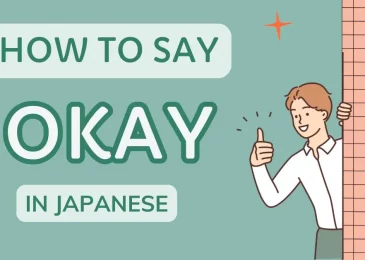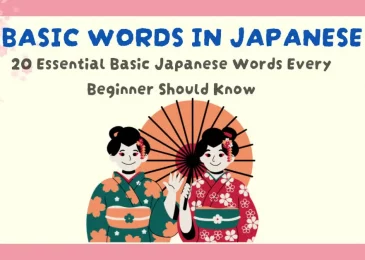What is Hiragana Used For?

Katakana vs Hiragana: Hiragana is one of the three writing systems used in the Japanese language, alongside Kanji and Katakana. Hiragana is the first script you’ll encounter when learning Japanese. It consists of 46 basic characters, each representing a syllable. It is primarily used for:
Native Japanese Words
Hiragana is used for words that do not have Kanji, or when the Kanji is too difficult or obscure for general use. For example, common native Japanese words like こんにちは (konnichiwa, “hello”) or ありがとう (arigatou, “thank you”) are written in hiragana.
Particles
These are small words that indicate the relationship between different parts of a sentence. Examples include: は (wa) – topic marker, が (ga) – subject marker, に (ni) – direction or goal marker,…
Pronunciation of Kanji
Hiragana is used in furigana (small hiragana characters placed above or beside Kanji) to show the pronunciation of Kanji characters. This is particularly helpful for learners or in texts where uncommon Kanji are used.
Inflections and Verb Conjugation
In Japanese grammar, verbs and adjectives change their forms through conjugation. Hiragana is used to write these changes. For example, 食べる (taberu – to eat) and 食べた (tabeta – ate) are written using a combination of Kanji and Hiragana. Hiragana is often seen in children’s books or beginner Japanese texts because it forms the foundation of sentence structure and grammar. For learners, it’s essential to master Hiragana first, as it’s used frequently in daily Japanese and enables you to understand sentence flow.
What is Katakana Used For?
Katakana vs Hiragana: Katakana is the second script, which consists of the same number of basic sounds as Hiragana. However, Katakana is mainly used for writing foreign words, names, loanwords, and borrowed terms. It also appears in onomatopoeia and technical or scientific terms. For example:
- コンピュータ (konpyuuta) – “computer,” a word borrowed from English.
- ホテル (hoteru) – “hotel” another loanword from English.
- ワンワン (wan-wan) – the sound of a dog barking (“woof woof”)
- ドキドキ (doki-doki) – the sound of a heartbeat, often used to express nervousness or excitement (“thump thump”)
- ウイルス (uirusu) – “virus”
- エネルギー (enerugii) – “energy”
Katakana also adds emphasis to words, much like italics in English. This emphasis makes it useful for highlighting key terms or expressions in written Japanese. As a result, Katakana is essential for reading foreign words and recognizing elements of international influence within modern Japanese text.

Additional Katakana vs Hiragana
In addition to the 46 basic characters, both Katakana vs Hiragana have additional characters known as 濁音 (dakuon), 半濁音 (handakuon), and 拗音 (youon).
Dakuon and Handakuon
Both dakuon and handakuon are formed by adding marks to certain characters. The dakuten ( ゛) adds a voiced sound to the original character, while the handakuten ( ゜) creates a semi-voiced sound. For example, in the Hiragana system, adding dakuten to the “Ka” row (か, き, く, け, こ) creates the “Ga” row (が, ぎ, ぐ, げ, ご). Similarly, adding handakuten to the “Ha” row (は, ひ, ふ, へ, ほ) forms the “Pa” row (ぱ, ぴ, ぷ, ぺ, ぽ). The same system applies to Katakana, where dakuten and handakuten are added to modify characters like カ (ka) to ガ (ga) and ハ (ha) to パ (pa).

Youon (Katakana vs Hiragana Combinations)
Youon characters are created by combining a smaller version of the “ya” (ゃ), “yu” (ゅ), or “yo” (ょ) with any character that ends in the vowel “i” (い). For example, combining き (ki) with ゃ (ya) creates きゃ (kya), and in Katakana, キ (ki) with ァ (ya) forms キャ (kya).
These combinations are important for creating more complex sounds, and the same applies to both Katakana vs Hiragana, such as しょ (sho) in Hiragana and ショ (sho) in Katakana.
These additional characters and combinations expand the range of sounds and expressions in both Katakana vs Hiragana, making them essential tools for mastering the Japanese writing systems

Which is easier to learn: Katakana or Hiragana?
Whether Katakana or Hiragana is easier depends on your goals and how you plan to use Japanese.
Hiragana often feels more approachable for beginners because of its rounded, flowing shapes, which many find easier to memorize and recognize. Hiragana characters are distinct, making them straightforward to read and foundational for learning Japanese.
Katakana, on the other hand, has more angular shapes and includes several visually similar characters, like シ (“shi”) and ツ (“tsu”), which can be confusing for new learners.
When it comes to usage, Hiragana is essential. It’s used in native Japanese words, particles, verb conjugations, and other grammar elements, so knowing Hiragana is a must. Katakana is primarily used for foreign words, onomatopoeia, and specialized vocabulary, especially in modern contexts with many loanwords. Therefore, if your focus is on everyday Japanese grammar and reading, Hiragana is generally more practical.
But if you plan to engage with areas rich in foreign terms such as travel, pop culture, or technology, Katakana is highly useful and might be something to learn alongside Hiragana.
Both scripts are necessary for anyone learning Japanese. Hiragana is used for grammar and function words, while Katakana helps handle the foreign influences in modern Japanese language.
Beginner Communication Examples
Sure, here are just examples 1 and 2 written as natural dialogues for practicing both Katakana vs Hiragana in common beginner conversations.
1. Introducing Yourself
In this example, two people meet for the first time:
A: こんにちは!はじめまして。わたしはマリアです。よろしくおねがいします。
(Konnichiwa! Hajimemashite. Watashi wa Maria desu. Yoroshiku onegaishimasu.)
“Hello! Nice to meet you. I’m Maria. Please take care of me.”
B: はじめまして、マリアさん。ぼくはタカシです。よろしく!
(Hajimemashite, Maria-san. Boku wa Takashi desu. Yoroshiku!)
“Nice to meet you, Maria. I’m Takashi. Likewise!”
2. Asking for Directions
Maria and Takashi are talking about where to find the hotel:
A: タカシさん、ホテルはどこですか?
(Takashi-san, hoteru wa doko desu ka?)
“Takashi, where is the hotel?”
B: あそこにコンビニがありますよね?ホテルはそのとなりです。
(Asoko ni konbini ga arimasu yo ne? Hoteru wa sono tonari desu.)
“You see the convenience store over there? The hotel is right next to it.”
These examples provide practical phrases and mix both Hiragana for Japanese words and Katakana for foreign loanwords like “hotel” (ホテル) and “convenience store” (コンビニ). They’re great for practicing natural conversation while getting familiar with each script!
What Are Some Tips for Learning Katakana vs Hiragana?
Here are four concise tips for learning Katakana vs Hiragana effectively:
Use Mnemonics
Mnemonics help you remember characters by linking them to images or stories. For example, さ (sa) can be remembered as a “saw” cutting through wood. Similarly, サ (sa) can be seen as the “sawing” motion. These associations make it easier to recall the characters when needed.
Practice with Apps
MochiKanji is a great app for mastering both Katakana and Hiragana. It provides interactive quizzes, in-depth writing exercises, and thorough progress tracking. The app also includes mnemonic support, along with flashcards that feature both audio and images, making the learning process more engaging and efficient.

MochiKanji – app learning Katakana and Hiragana for beginners
Start with Writing
Writing characters by hand strengthens memory retention. Repetition helps your brain connect the character’s shape with its sound. Saying the sound out loud while writing also reinforces auditory recognition. This combination of writing and speaking enhances both reading and writing skills.
Daily Exposure
Exposure to real-world materials is crucial for learning. Start reading simple signs, menus, or children’s books. This helps you recognize characters in context. Over time, you’ll become more comfortable with Hiragana and Katakana in everyday Japanese.
Conclusion
Mastering both Katakana vs Hiragana is crucial for anyone learning Japanese. Hiragana forms the foundation for sentence structure and grammar, while Katakana is used for foreign loanwords, technical terms, and onomatopoeia. By understanding when and why each script is used, you’ll gain a deeper understanding of the language. For an effective and enjoyable learning experience, try using the MochiKanji app. It offers spaced repetition to help you reinforce character recognition and improve your reading skills. Stick with it, practice regularly, and soon you’ll find recognizing and using both Katakana vs Hiragana will come naturally!





